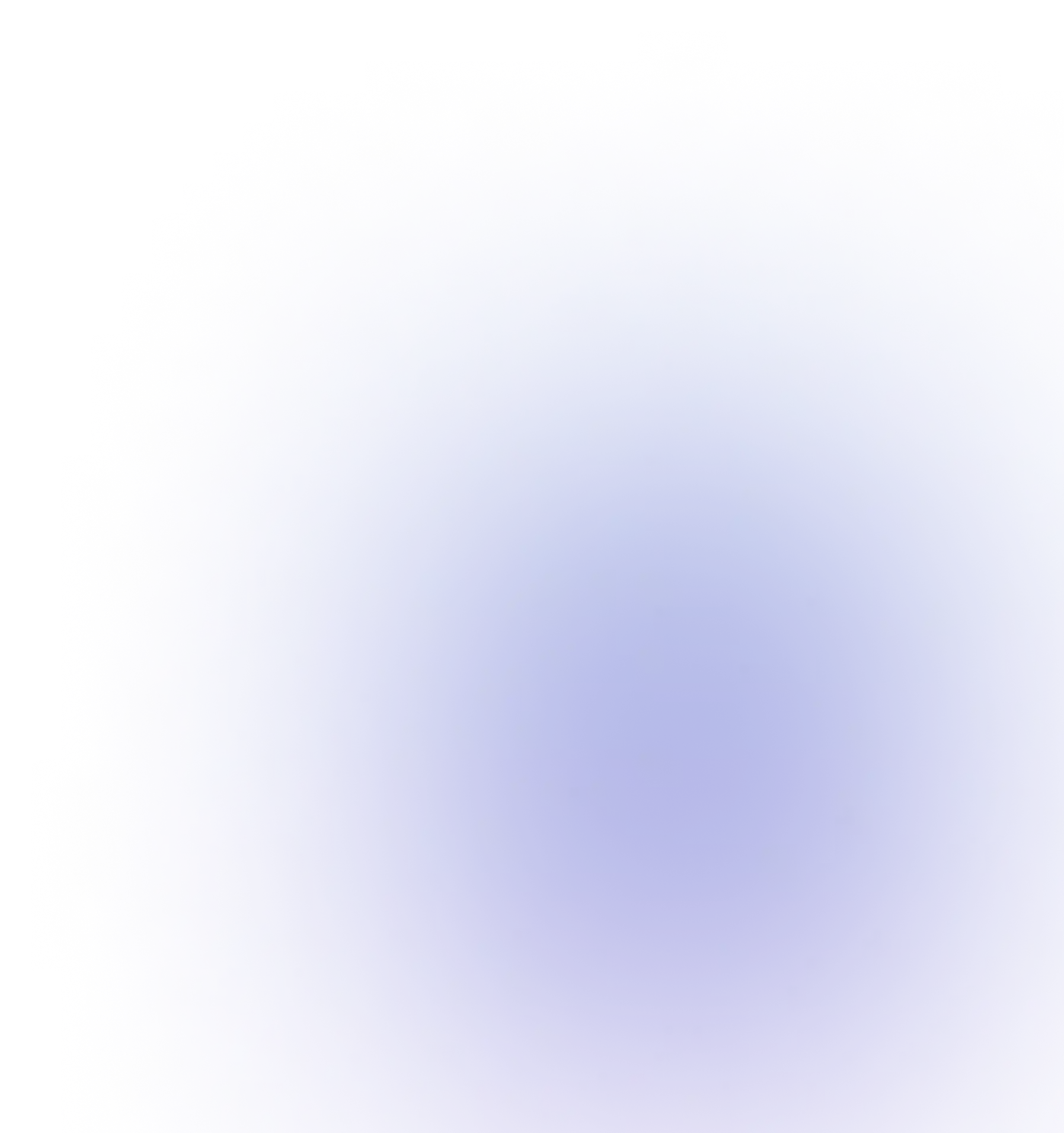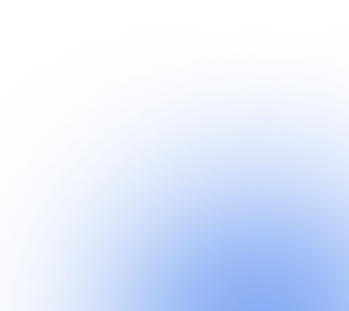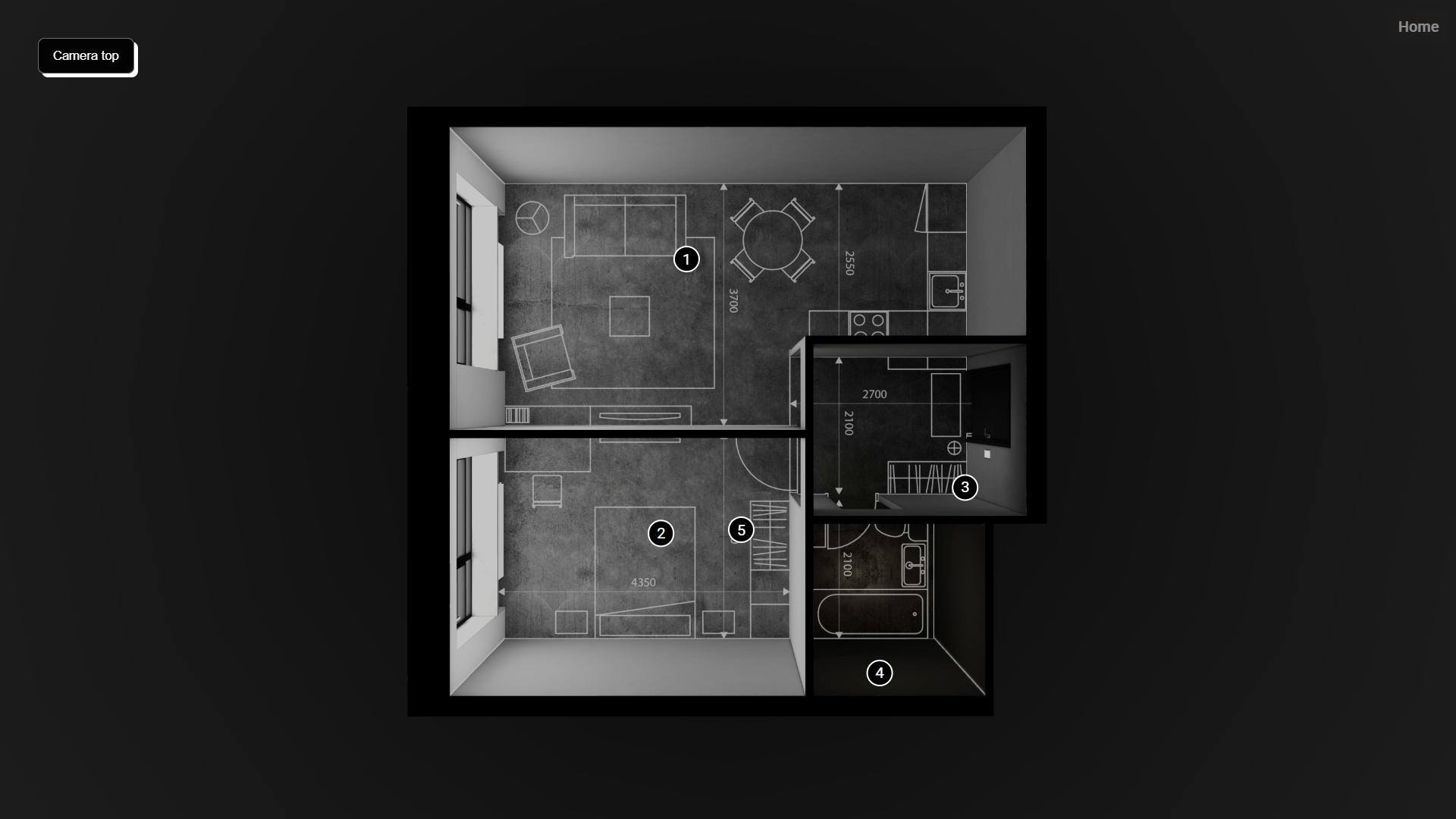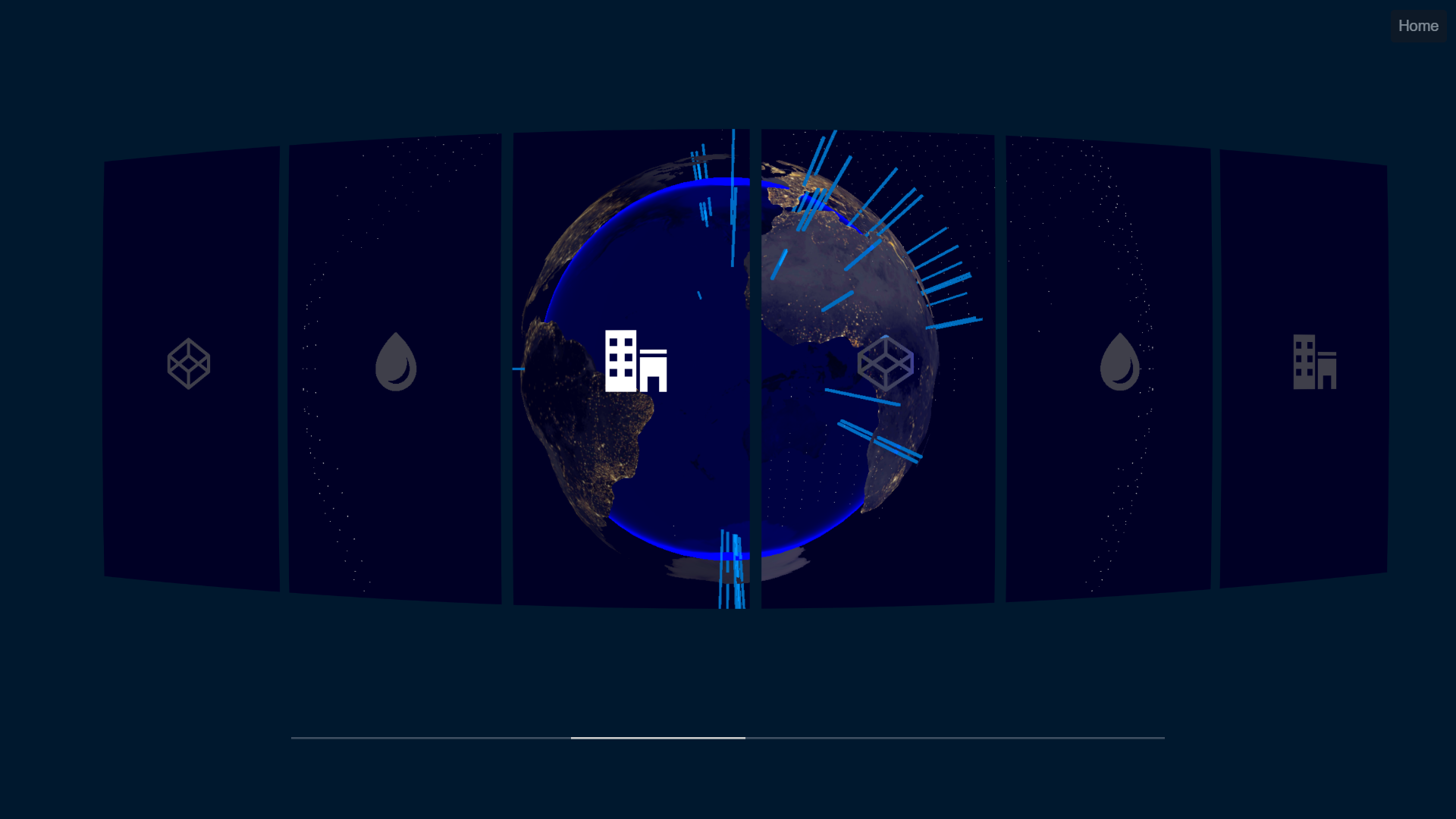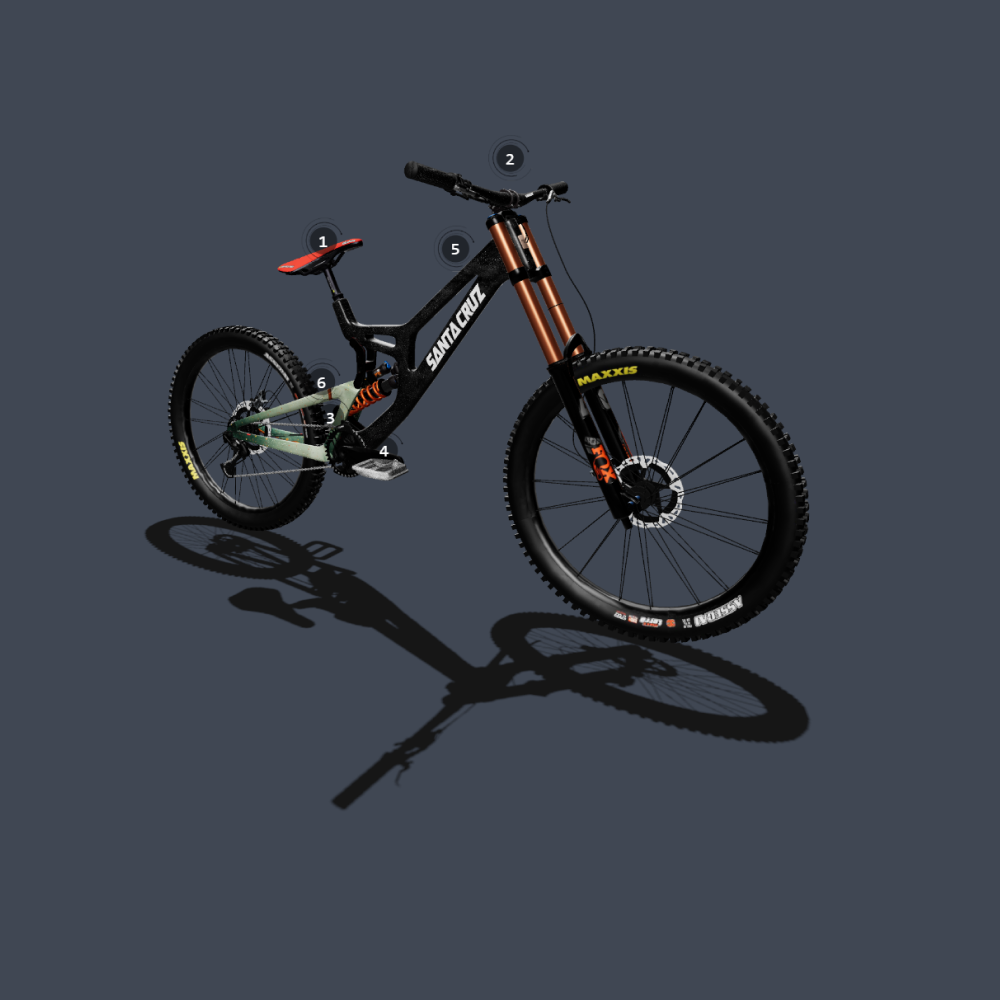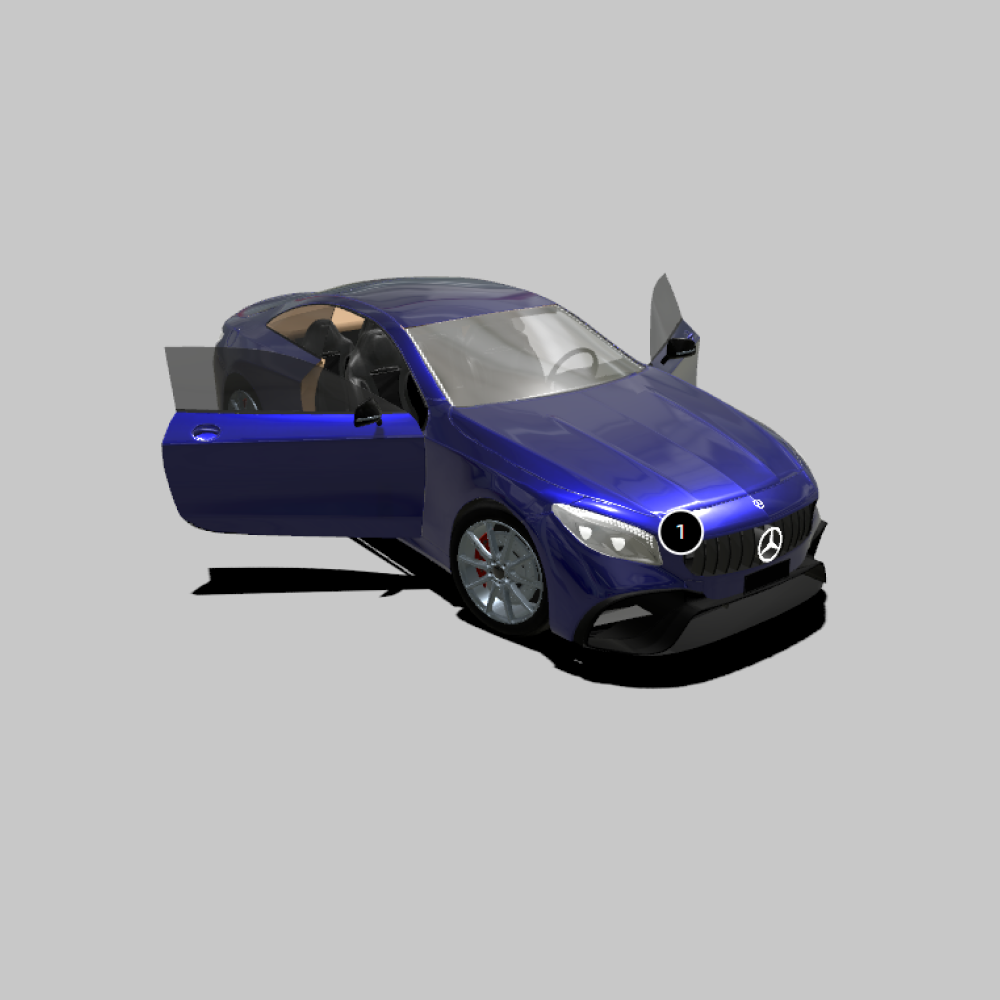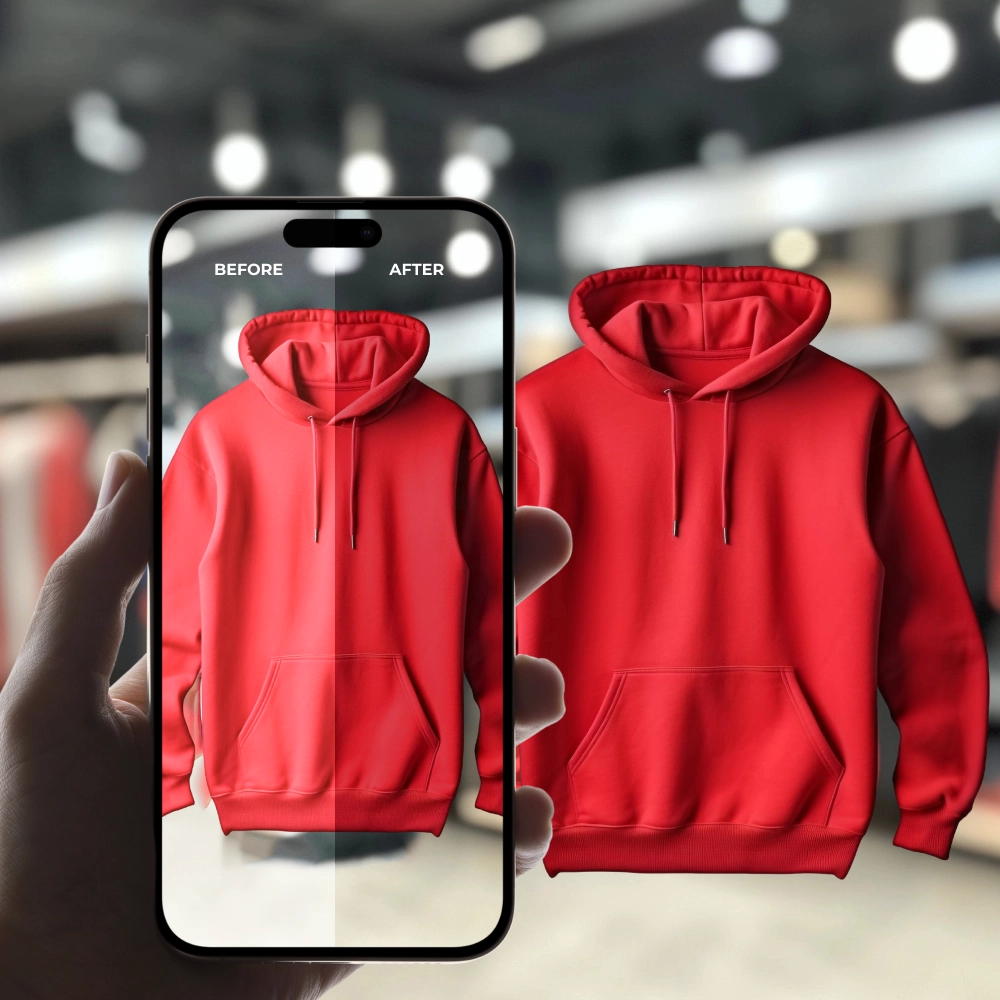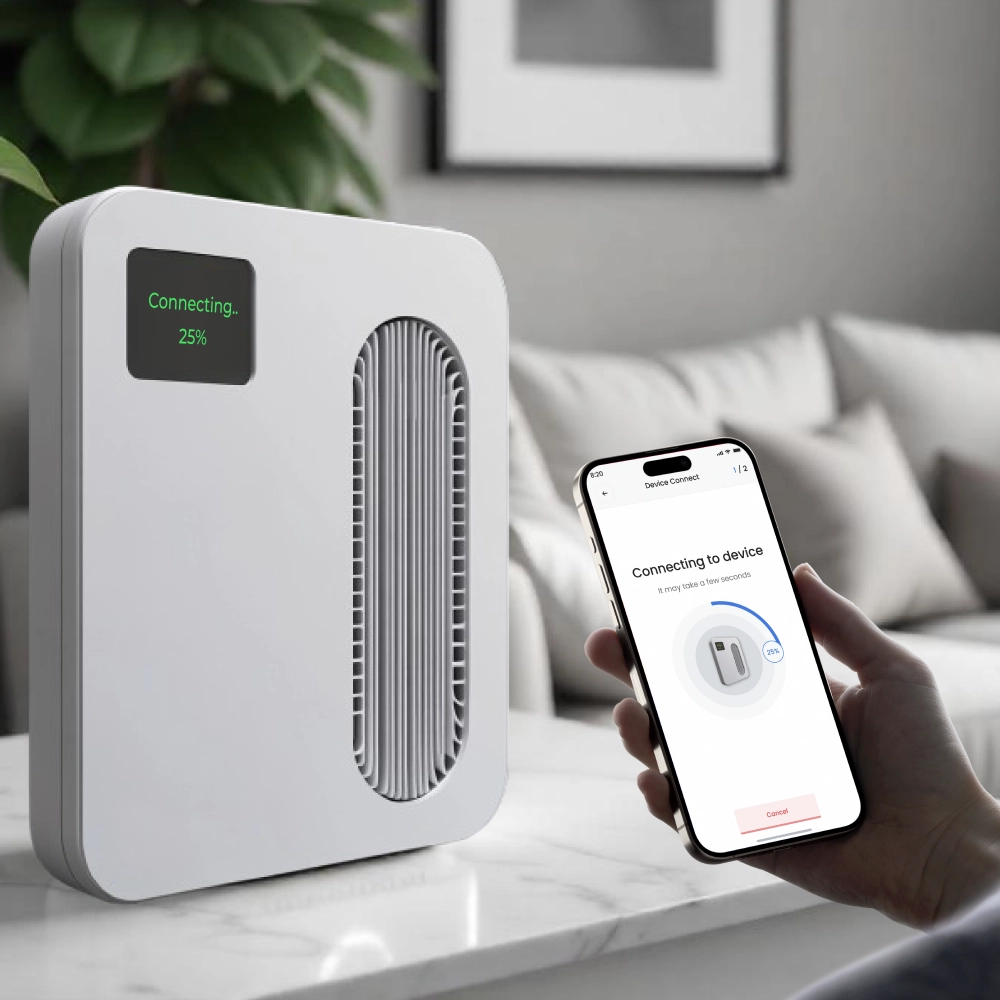








Clothing and footwear configurator
Fashion platforms today face the same problem: how to offer customers a unique online shopping experience and avoid returns due to expectations not being met? Standard photos and descriptions in online stores and websites do not give a complete picture of the product, raise doubts and delay the purchase process. Therefore, consumers are increasingly choosing platforms where they can see the product in detail and customize it for themselves.
A modern 3D/2D configurator allows each user to become a virtual configurator of their own clothes or shoes. Such a tool makes the selection process fast and exciting, increases brand trust and stimulates purchases.
AVADA MEDIA helps configurators, manufacturers, and sellers create an online clothing configurator that easily integrates into an online store and website, works on all devices, and adapts to specific business tasks. If you want to increase customer engagement, reduce returns, and stand out from your competitors, order the development of an online configurator today.
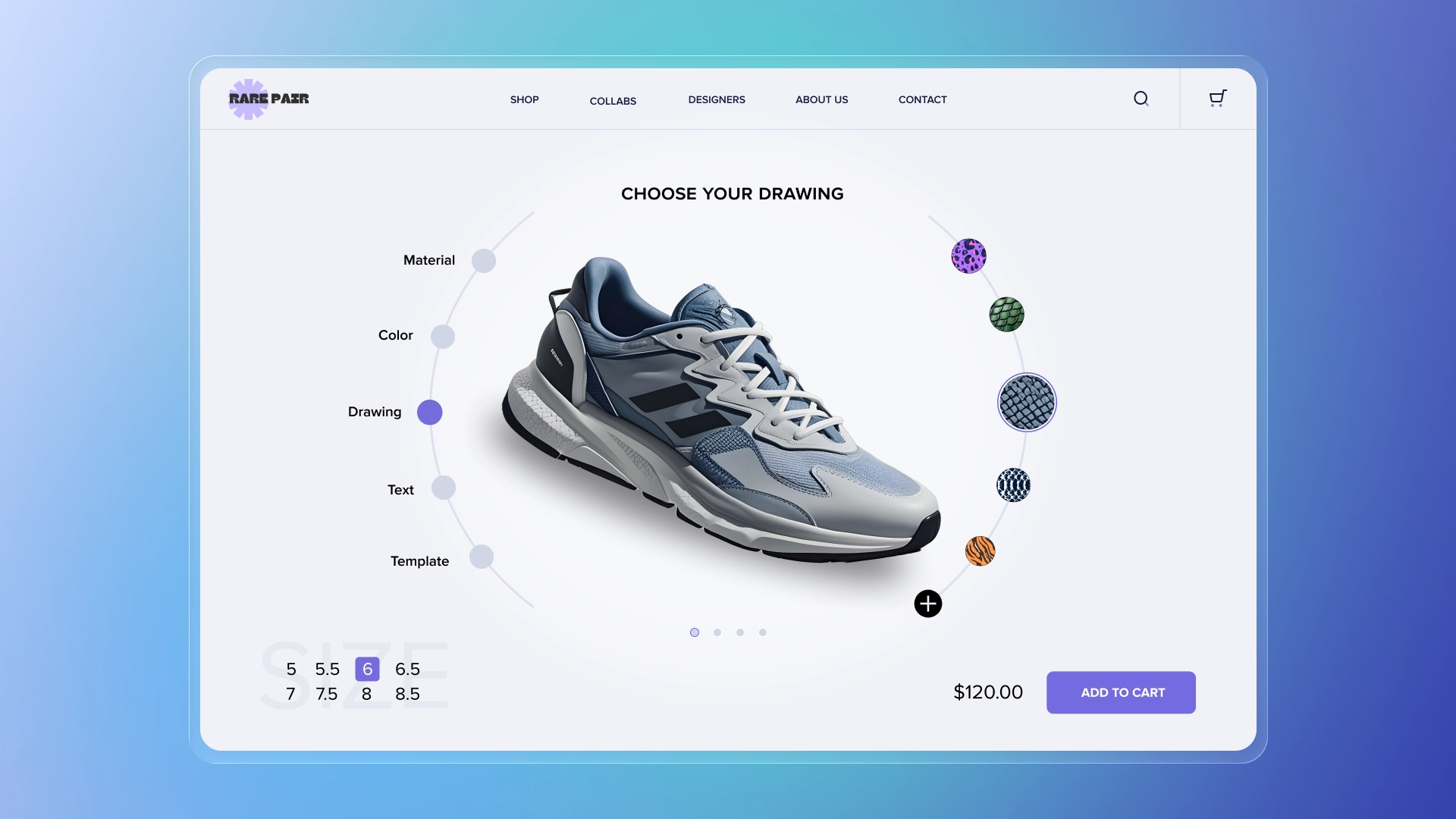
What is a 2D/3D online clothing configurator?
3D/2D configurators for clothing and footwear are interactive online tools that allow you to customize the appearance of a product to your liking and see the result immediately. Their main goal is to turn the selection process into a visual and exciting experience, as close to reality as possible.
- 2D shoe and clothing configurators work with a flat image of the product. They allow you to change the color, texture and details in a static form. This option is often used to select prints and logos. A program for 2D online clothing design is faster to develop, easier to integrate, and requires fewer resources when uploaded to the website and application. Choose 2D visualization when you need simple and quick customization of the appearance of the product with minimal load on the system.
- 3D clothing configurators provide a full three-dimensional visualization. The user can rotate the model, view it from different angles, change elements in real time and even try it on a virtual mannequin. This creates the effect of live interaction with the product and helps the buyer better imagine how the product will look in reality. Our developers use Web3D graphics for clothing, shoes, accessories and any products where volume and detail are important.
Both types of visualization can be integrated into an online store, corporate website, or marketplace, and the choice between them depends on business objectives, budget, and desired level of detail.
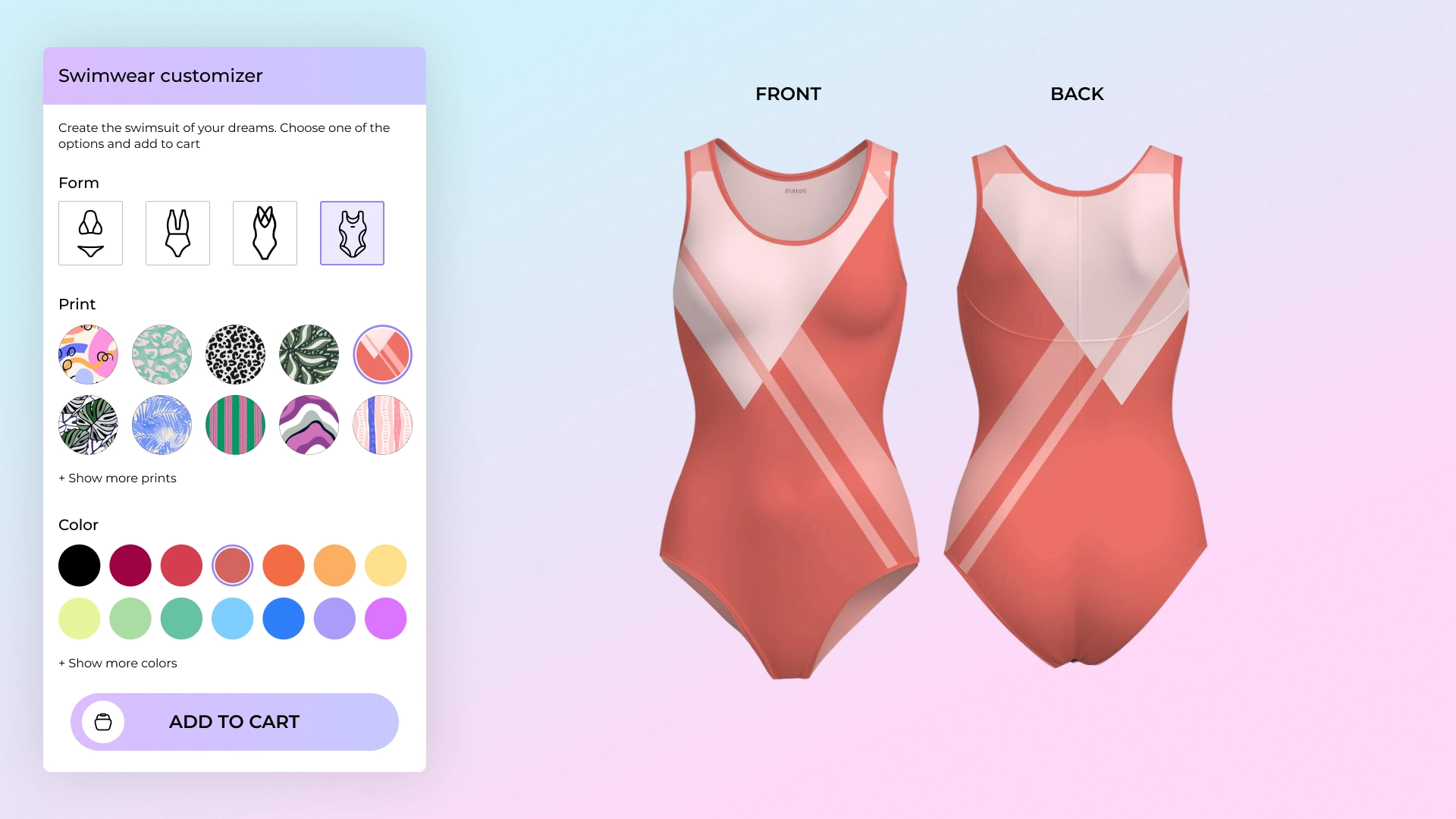
What opportunities does the online clothing design configurator provide?
Online 3D clothing modeling opens up a whole range of possibilities for buyers and brands, making the selection process convenient and creative. Depending on the product category, the tool options will vary.
Outerwear configurator
Jackets, coats, raincoats and parkas can be customized in the outerwear configurator down to the smallest detail. The user chooses a style – fitted, oversized or classic straight, adjusts the length of the product and sleeves, changes the color and material (leather, wool, raincoat fabric, synthetics), additionally selects accessories – zippers, buttons, rivets, adds a hood, pockets or fur trim.
Сonfigurator of dresses and suits
The online dress configurator allows you to experiment with the silhouette and length of the product, select fabrics and their textures - from light silk to dense knitwear, adjust color and patterns, add decorative elements such as belts, brooches or ruffles. In the wedding dress configurator, you can add a choice of cut (princess, A-line, mermaid), materials (satin, chiffon, lace) and details - train, trim, corset or sleeves.
Online configurator of t-shirts and shirts
The online T-shirt configurator gives the client the opportunity to create an individual design of the product, changing the shape of the neckline, collar type, sleeve length and style, cut and silhouette. You can choose the fabric, color, pattern, add prints, inscriptions, logos and branding elements.
Headwear configurator
The hat configurator covers a wide range of products: baseball caps, fitted caps, panama hats, knitted hats, bandanas and even uniform hats. You can choose the style, material, color, decorative elements, emblems or embroidery.
For example, the online cap configurator allows you to choose:
- material – cotton, twill, nylon, polyester, wool, blended fabrics;
- color scheme for different elements – visor, buttons, eyelets, lining;
- branding elements – embroidery, thermal printing, patches, 3D emblems;
- size and fit – adjustable clasp, fixed size, elastic band;
- unique elements – patterns, camouflage, gradients, metal fittings.
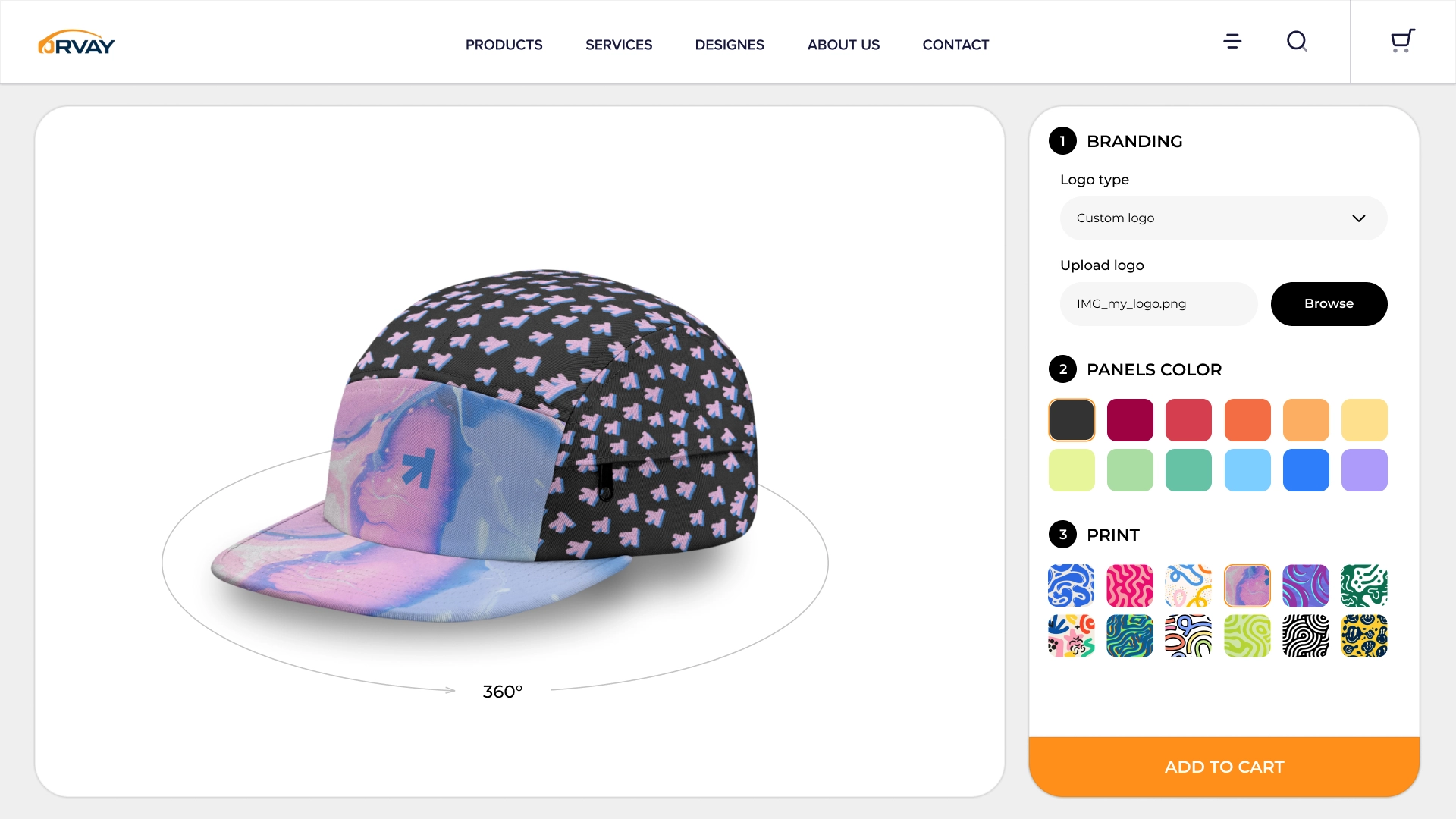
Сonfigurator of skirts, trousers and jeans
The customer adjusts the length, fit and cut of the product – from classic straight to ultra-fashionable wide leg. You can change the color, add prints, choose a style – plain, with scuffs, combined. Accessories (buttons, zippers, belts) and decorative inserts in the skirt configurator can also be changed individually.
Underwear configurator
It allows you to individually select the style (bra, bralette, bustier, shorts, thongs, etc.), cup size and girth, material (lace, cotton, silk, microfiber), as well as color and decorative elements - from elegant bows to embroidery or personalized engraving on accessories. The online lingerie configurator is especially popular among premium and niche brands focused on exclusive orders and a personal approach.
Online shoe configurator
The shoe configurator is suitable for sneakers, boots, shoes and sandals. The user selects the model and height, changes the material and color of the upper (leather, suede, textile), selects the shape and color of the sole, adjusts the lacing, inserts, logos. It can also create a unique design, including adding a name or symbol.
Online configurator of sportswear and homewear
The online configurator of sweatshirts, hoodies and sportswear allows you to customize the style and length of the model, combine colors and materials, add logos or individual prints. Such a clothing configurator is especially in demand for brands that offer customization of sportswear or home textiles.
A clothing and footwear configurator turns a standard purchase into an exciting creative process, where the client receives a product that best suits their style and needs, and the brand receives a loyal customer and a valuable tool for increasing sales.
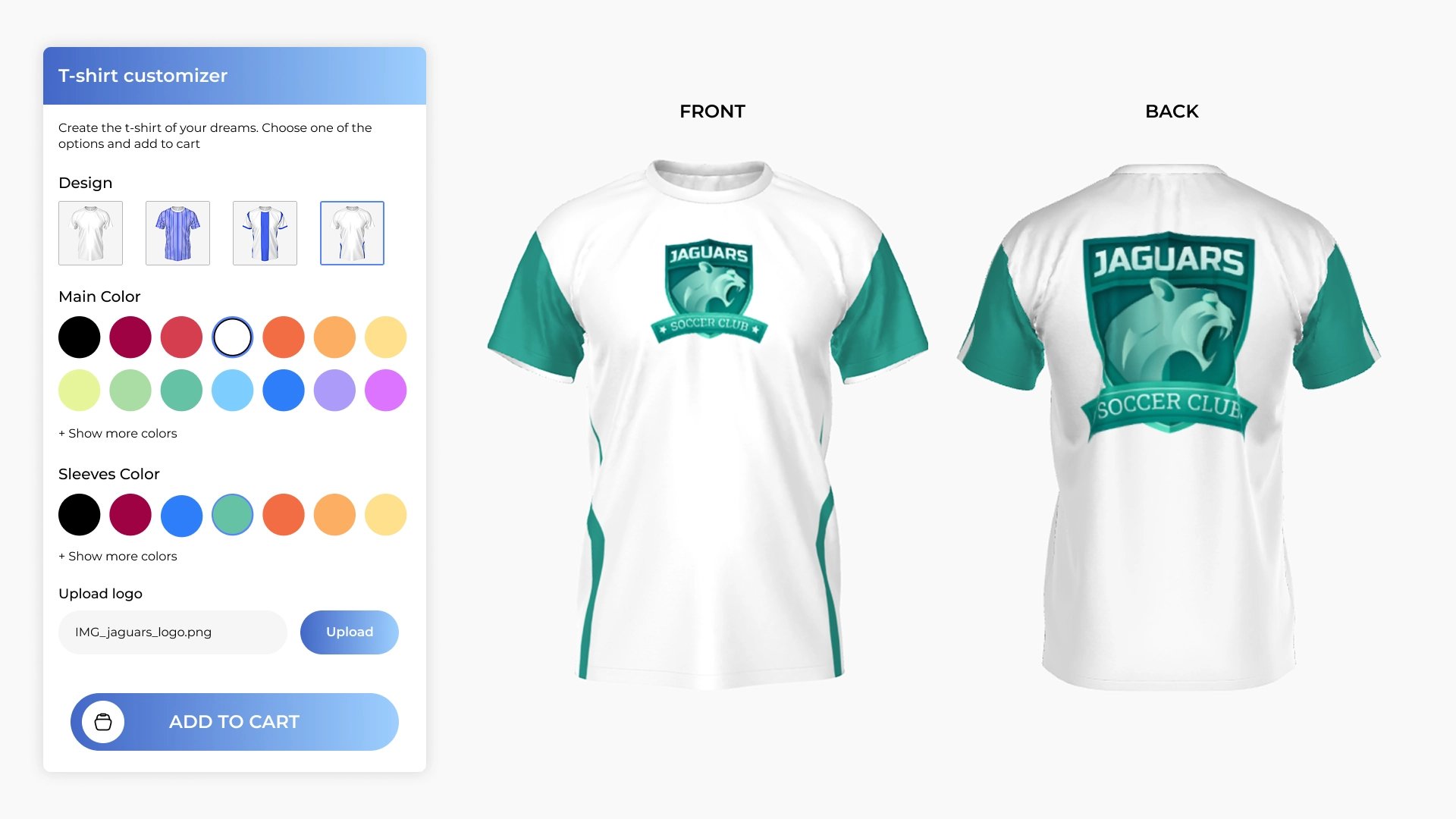
Advantages of 3D clothing modeling online
The introduction of a footwear and clothing configurator impacts sales, marketing, and production processes. Thanks to this, brands become closer to their customers, offering a unique interaction experience and optimized internal resources.
- Increases conversion and average check. When a customer personally assembles a product and sees the result in real time, he is more likely to place an order. Additional options, premium materials, fittings and decorative elements encourage modeling more expensive options, increasing the average cost of the order.
- Reduces returns and complaints. 3D and 2D online clothing design allows the user to estimate in advance how the finished product will look. This reduces the number of returns due to a mismatch between expectations and reality and increases customer satisfaction.
- Strengthens customer loyalty and engagement. The configurator turns the purchase into an interactive process where the customer feels like a co-author of the product. Such an emotional experience forms a connection with the brand and motivates them to return for new purchases.
- Expands the range without increasing inventory. 2D/3D online clothing configurator offers dozens of variations of one model without the need to produce them in advance. This reduces warehousing costs and minimizes the risk of illiquidity. Production is made to order, and the storefront remains as compact as possible.
- Integrates with internal and external systems:
- with ERP – for synchronization of inventory balances, prices, automatic order generation and production planning;
- with CRM – to record all data about the client, their order history and preferences, which helps to build personalized communications and repeat sales;
- with PIM systems for updating product characteristics;
- with logistics companies to calculate delivery and other services according to the project specification.
Integrations allow you to create a fully automated cycle - from the customer's configuration of the product on the website to placing an order, automatic data transfer to production, inventory control, payment, logistics, and after-sales service.
- It becomes part of an omnichannel strategy – it works equally effectively in online stores, mobile applications, and offline points of sale via tablets or touch panels. Thanks to this, the customer can interact with the brand in any format.
- Collects analytics and data on consumer preferences. Every user action in the configurator can be recorded. This data helps manufacturers and sellers understand trends, adjust the assortment and develop new models, focusing on real demand.
- It distinguishes the brand among competitors , especially in segments where personalization is becoming the standard – it creates the image of a modern, customer-oriented business.
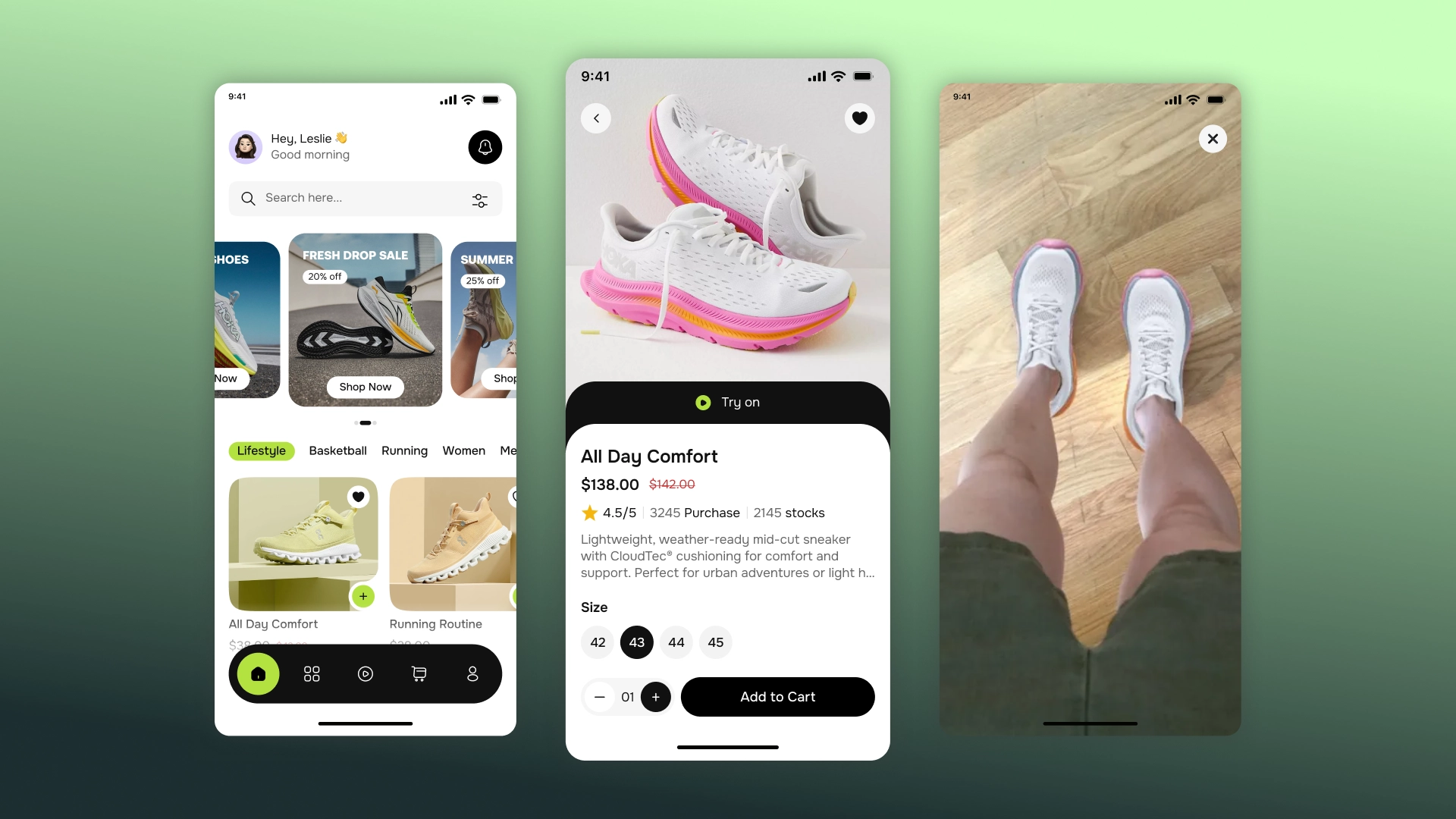
Stages of configurator development
We create an online clothing design configurator from scratch, focusing on the specifics of the brand, the features of the assortment and the wishes of the customer. The work is built according to a transparent and understandable scheme so that you see the result at every stage.
- Task analysis and formation of TOR. At this stage, analysts study your business, assortment, target audience and tasks that the configurator must solve. They determine whether it will be 2D or 3D clothing design, what customization and visualization options will be needed, whether integration with other systems is required for complex automation. Based on this information, they form a technical task.
- Development of UX/UI design and prototype. After approving the concept and functionality of the future configurator, a convenient, intuitive interface is created. UX/UI designers think through the logic of user interaction with the system, taking into account both the visual part and ergonomics: the location of elements, response speed, adaptation to different devices. Based on the UX/UI, an interactive prototype of the configurator is designed - a working model on which you can demonstrate the user's journey to the customer and make adjustments before the start of development.
- Preparation of 3D/2D models. Create or adapt realistic models of clothing or footwear with the development of textures, materials and details. They can be developed from scratch or use ready-made 3D/2D models, adapting them to the project. This approach saves time and budget, especially if the client already has a library of their own models. For 3D clothing configurators, we implement the ability to rotate, scale and view from different angles.
- Software implementation. At this stage, developers transform the interface and models into a full-fledged interactive product. When programming the user interface (frontend), they use modern technologies - React.js or Vue.js for a dynamic interface, as well as Three.js and Babylon.js for working with 3D graphics directly in the browser (model rotation, scaling and dynamic lighting). These tools allow you to create realistic visualizations of clothes and shoes, and ensure smooth operation of the online configurator on different devices. The server part is responsible for data processing and storing configurations. Our backend developers ensure the reliability, security and scalability of the solution.
- Integrations with internal and external systems. At the client's request, the configurator is built into the existing IT infrastructure - an online store or corporate website, integrated with external and internal systems. To create a fully automated chain from product configuration to payment, production and delivery, we can develop for you an individual ERP and CRM for an online store in the format of a PWA application, as well as a chat-oriented management system based on our AvaCRM product or individually.
- Testing and optimization. We check the work of the shoe and clothing configurator on different devices and browsers, test the loading speed, smooth rotation and scaling of 3D models, correct display of colors and textures. We perform functional and load testing, eliminate detected errors and optimize performance.
- Launch and support. We launch the configurator, configure it and train employees for self-administration. If necessary, we provide technical support: monitoring of work stability, regular updates. Upon request, we implement new functions and integrations so that the configurator always meets business requirements and customer expectations.
How to order online clothing configurator
The introduction of modern 3D and 2D configurators for clothing and footwear is an investment in business process automation and a new level of business digitalization. If you want to order an online configurator for the fashion industry with high-quality visualization, an intuitive interface and custom options, contact us with your idea. We are forming a dedicated team of experts with extensive experience, offering transparent implementation times and fair development costs. With AVADA MEDIA you will receive a software solution that will bring your brand closer to the customer and increase sales efficiency.
FAQ
-
How does the configurator integrate with an online store or corporate website?
The visual editor is built into the existing platform, which allows you to send the finished project directly to the cart and ensure data exchange with CMS and other systems. If you are just starting a business and are planning a digital environment for effective automation, we recommend ordering a corporate website in an adaptive PWA format or an online store with a built-in online clothing configurator.
-
How is the cost of an online clothing configurator formed?
The price of the project depends on the complexity of the program, the number of options and integrations, the type of visualization, and the implementation time. We offer transparent pricing and will select the optimal solution for your budget.
-
How long does it take to develop a turnkey configurator?
The timing depends on the scale of the program, functionality, availability of ready-made models, the need for integrations and customization features. After the analysis, we provide a plan and project milestones.
-
Can I use the configurator for custom collections and limited editions?
Yes, the 3D online clothing configurator allows you to create individual collections with unique styles, materials and options. You can restrict access to certain models, set up special options for seasonal collections or limited editions, and the system will automatically take these parameters into account when calculating the price and generating SKUs.
-
Is it possible to implement tips in the clothing configurator?
We can implement a system of intelligent prompts, including those based on an AI assistant. It will analyze the user's actions, suggest suitable options for styles, materials, and colors, warn about incompatible elements, and give recommendations on size and style.
-
How does the configurator handle non-standard sizes and custom parameters?
The system allows you to set individual dimensions and proportions of the product, automatically adapting the model to the selected parameters. The program's algorithms check the compatibility of the selected parameters, preventing errors and instantly changing the visualization, price and article number.
-
Can I export ready-made configurations for production or printing?
Ready-made configurations can be exported in the desired format to transfer data from the client to the design department or to production without errors, eliminating manual input errors and speeding up the cycle from order to product release.
-
Do I need powerful hardware to work in the configurator?
The program will work equally well on PCs, laptops, tablets and smartphones. The main computational operations are performed on the server, and ready-made visualizations are transmitted to the browser, which reduces the load on the user's device. At the same time, 3D versions are adapted to the capabilities of a specific device, automatically adjusting the quality of graphics for comfortable work through the use of modern web technologies and optimization of graphic rendering.
